Want to quickly mask an unsightly wall or fence? Ipomoea will come to your aid. Let’s find out who Ipomoea is, how to plant and care for her in the open ground, what diseases can catch her, how the plant propagates. Photos of the plant can be seen below.
Content
- 1 Description
- 2 Homeland
- 3 Stem
- 4 Leaves
- 5 Flowers
- 6 The main conditions for growing morning glory from seeds
- 7 Land selection and cultivation
- 8 Seed preparation
- 9 Processing methods
- 10 Landing
- 11 Support
- 12 Landing care
- 13 Picking seedlings
- 14 Permanent inspection and top dressing
- 15 Watering
- 16 Subsequent processing
- 17 Diseases and Pests
- 18 Types of morning glory
- 19 Varieties
- 20 Design
- 21 Landing Features
Description
Morning glory or bindweed is named after two Greek words that translate as “worm-like”. And this is not due to the fact that the plant wriggles, but because it has such a root. Heat-loving vine in temperate latitudes is grown only one season, in the south it can become a perennial.
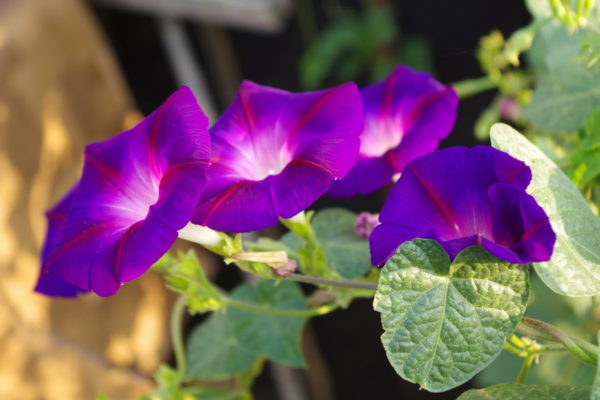
Homeland
Introduced in the 17th century from South America.
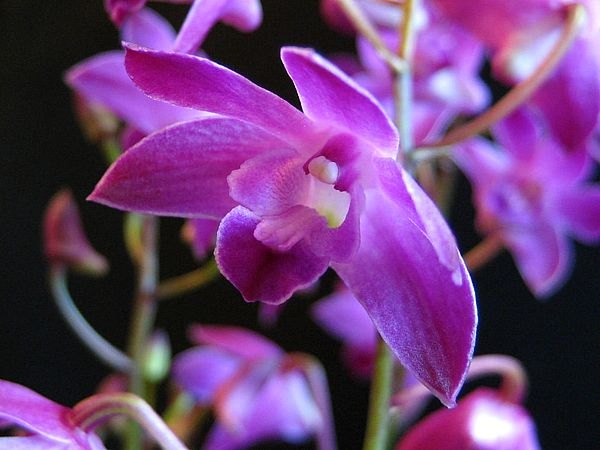 You may be interested in:
You may be interested in:Stem
Liana up to 5 meters, attached to the supports. The stalk can be thin long or form a bush.
Leaves
The foliage is thick, mostly green, the shape is diverse, covers the entire plant.
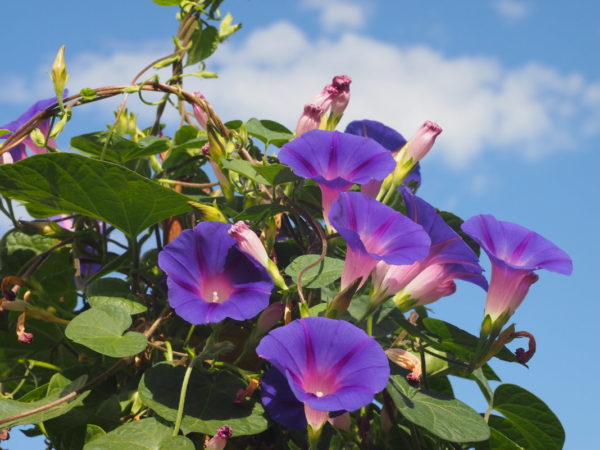
Flowers
Blossom early in the morning, for which they received interesting nicknames in different languages:
- In Russia, the "morning dawn."
- In Japan, the "morning face".
- In England, "Long live the morning!"
Flowers with a pleasant aroma, large, similar to gramophone. Shades are diverse.
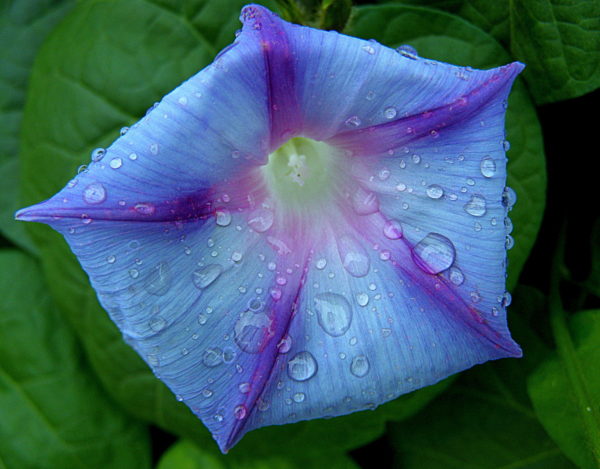
They have their own peculiarity, although the liana grows in the subtropics, its flowers in the bright sun can stand closed, and be open in cloudy weather.
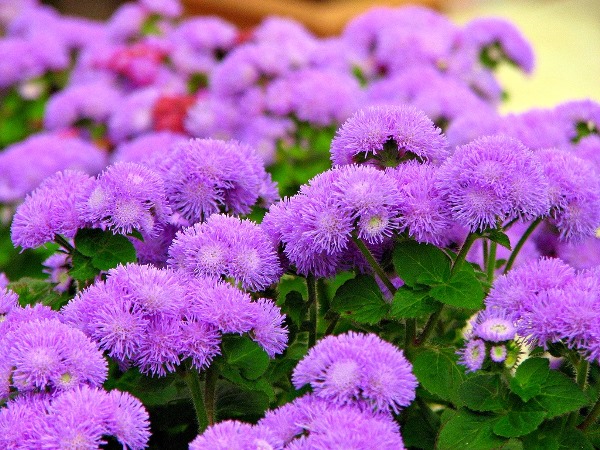 You may be interested in:
You may be interested in:The main conditions for growing morning glory from seeds
Ipomoea is a southern plant and loves the sun. It is better to plant it in open ground at the end of May.
Land selection and cultivation
The flower bed for morning glory must be located in a place protected from the winds.
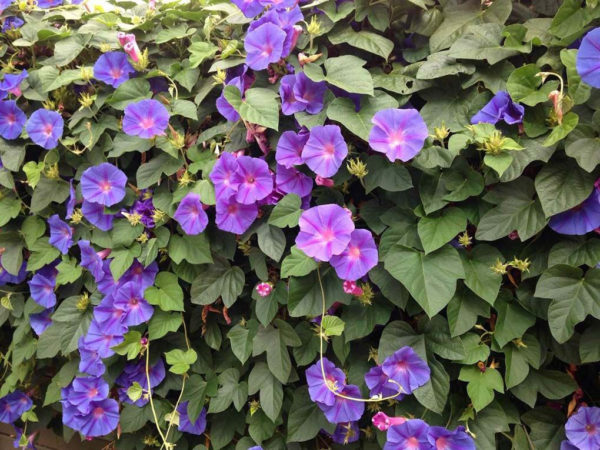
Preparation for planting morning glory begins with soil. Take peat, sand and humus in equal proportions. The reaction should be neutral. Loosen the earth, weed, moisturize. Add fertilizer. You can pour it with boiling water. Wells are laid at a distance of 20 cm from each other.
Seed preparation
For morning glory to ascend quickly, planting and care in the open ground begins with the preparation of seeds. The photo displays all the steps in this process. Knowing when and how to plant a flower, you can get a great result.
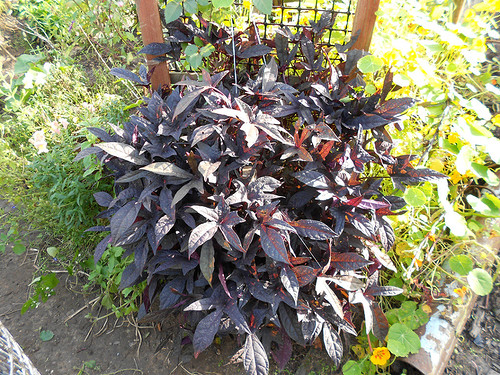
Processing methods
For quick seedlings of morning glory seeds, there are several ways:
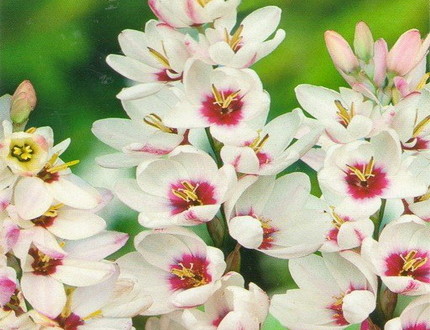 You may be interested in:
You may be interested in:Stratification
Seeds are actually frozen in the upper compartment of the refrigerator for two weeks. This happens in winter at low temperatures. Then take out and put in the root solution.
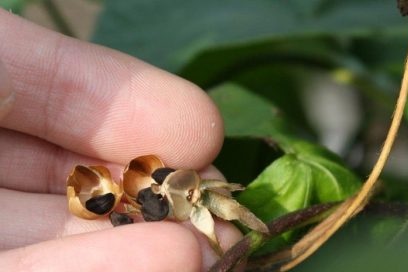
Moisturizing
Morning glory is placed in the compartment for vegetables, previously wrapped in a newspaper.
Having taken out and treated with zircon, they wrap it with a wet rag. When the roots appear, plant them.
Hot water treatment
Ipomoea seeds can be pricked with a needle, and then put in a thermos at night, flooded with water at about 60 degrees. They will swell.
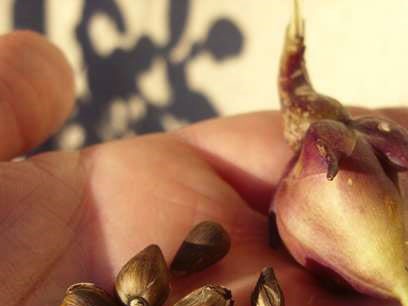
Landing
Soaked seeds are planted on a prepared flowerbed, 2-3 pieces in each hole. Produce watering.
Support
As soon as the seedlings begin to emerge, it is necessary to establish a support for each plant or tie it to a common one. Any net, fence, specially stuck sticks can serve it.
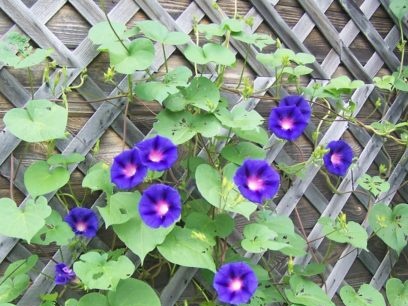
Landing care
The plant is thermophilic, at first it is necessary to shelter with agrotextile. And then the process is the same for many plants.
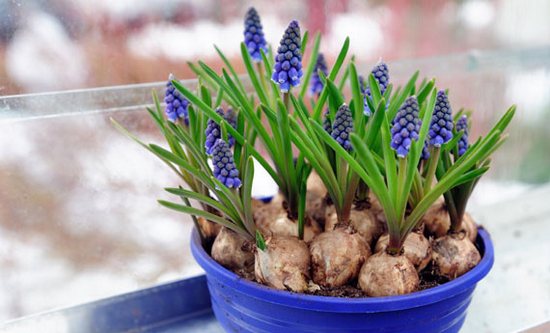 You may be interested in:
You may be interested in:Picking seedlings
It is carried out necessarily, although morning glory does not like it. Using a stick, the plants are removed, inspected. unripe and with various flaws thrown away, others are transplanted into separate beds.
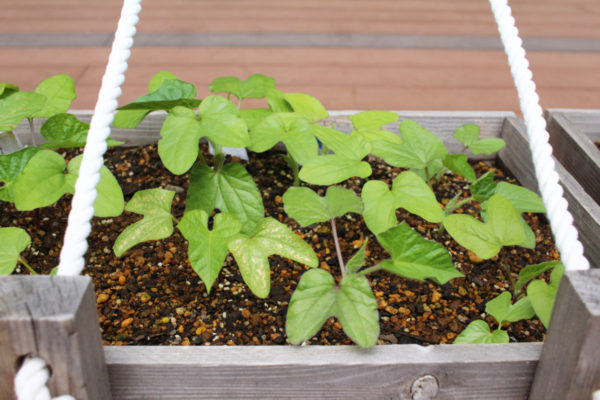
Permanent inspection and top dressing
It is necessary to periodically look under the plants, inspect the leaves, as they may appear spotting, color changes occur. This indicates the presence of diseases or uninvited flying and crawling guests.Strengthen morning glory by applying nitrogen and potassium fertilizers and insecticides. It boosts immunity. This must be done throughout the growing season.
Watering
Watering must be done once every 2 weeks or as the land dries. Under dry weather, pour up to 1 liter of water.
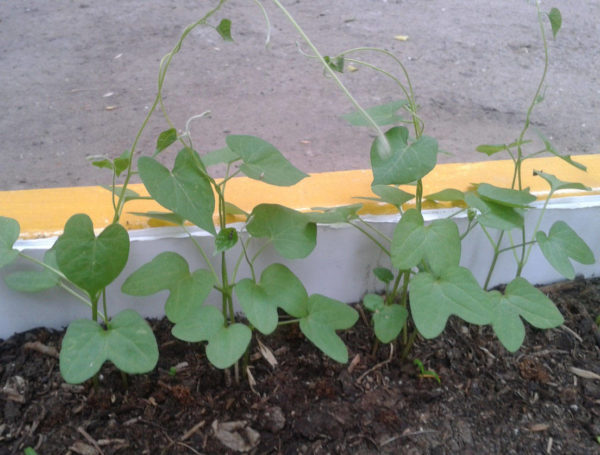
Subsequent processing
After flowering morning glory, which lasts all summer, the care is simple:
- Removing faded flowers and stems
- Preservation of soil friability
- Mulching with sawdust or grass.
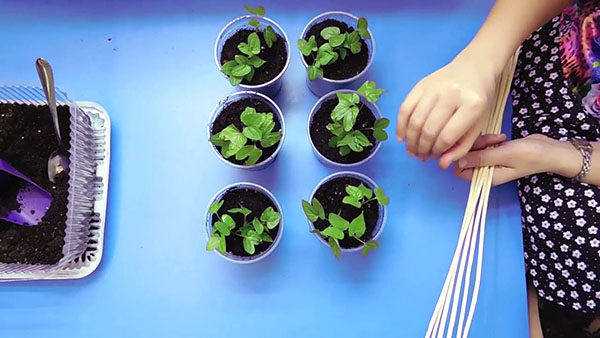
Diseases and Pests
The defeat of morning glory disease and pests sometimes lead to the death of the plant. They need to be constantly examined and when the first signs of defeat appear, take measures.
- Late blight. The entire root system dies, the plant is completely removed.
- Root rot. Leaves quickly turn yellow, red threads on the roots, the root neck dies. Ipomoea is dug up and thrown away. Healthy planting is transplanted to another place.
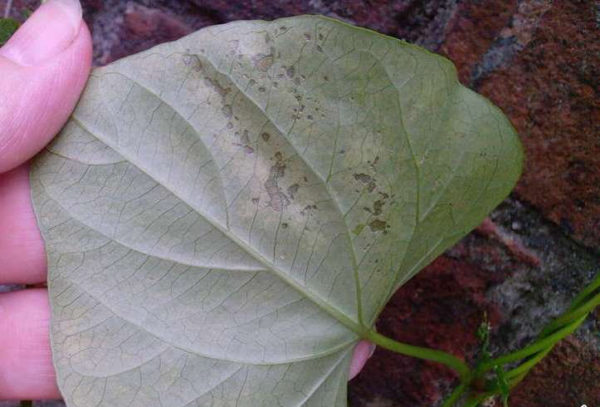
- Spider mite. A sign is yellowed leaves and thin strands of white web. To remove insects, sprinkle with cold water for several days, then process with Spark.
- Whitefly A sticky substance appears on the leaves. Juices are sucked out of them. Apply spraying karbofos.
- Aphid. It affects morning glory leaves and flowers by drinking juice from them. The insects are washed off by sprinkling, then they are sprayed with a soap solution and biotin preparations, Fitoverm.
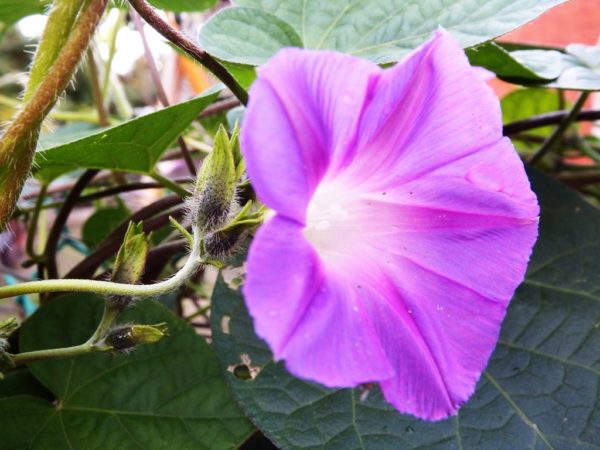
Types of morning glory
Ipomoea, found on almost all continents, has various forms, ranging from lianas to trees. Planting each of them and care in the open ground have their own characteristics. Find out which ones.
| Types of morning glory | Plant description | leaves | the flowers | features |
|
Sweet potato
|
Over 500 species. Good for food, low. | Palmate. | Funnel, lilac. |
morning glory sweet potato has the second name "sweet potato". When planting and care in the open ground, you can not get carried away with fertilizers, as this will affect the quality of the vegetable.
|
| Kvamoklit |
Annual, up to several meters. Ipomoea kvamoklit from South America, planting and care in the open ground must be consistent with the growing conditions
|
Carved, openwork, light. | Bright, many shades, star-shaped | It looks like little Christmas trees |
| Purple | Branched shoots with hairs, reaches 7m. | Heart-shaped, stiff, large. | Large 7-8cm, burgundy, flowering abundant. | Fully revealed on cloudy days. |
|
Ivy
|
Similar to ivy, an annual liana with a branching stem, | Ternary, elongated, pointed. | most often blue with a white edging, but there are also red, pink or burgundy. | Until late autumn bloom. |
| Water spinach | The stem is hollow, forming subordinate roots. | Pubescent from below, oblong. | Up to 5 cm, from white to red. | It is used as an additive in various dishes. |
|
Sky Blue (Ipomoea Heavenly Blue)
|
belongs to the species of tricolor, comes from southern Mexico. They grow it as an annual vine, grows up to 3 m in a year. The stem is smooth.
|
Wide, reminiscent of hearts. | sky blue with white throat, large - up to 10 cm in | Flowering is plentiful from mid-summer to the end. |
| Tricolor | native to the jungle of America, with branched stems, | Large, rounded, heart-elongated | up to 10 cm, assembled into sockets of several pieces. | For 2 centuries, breeders managed to bring out a lot of interesting subspecies and varieties. |
| Nile | In our country, grown as an annual. grows to 3 m, branches strongly | Oval on long stalks | up to 10 cm across, red, purple, blue, pale blue, pink with a white middle | July-October. |
Varieties
Creepers are very popular among gardeners, now a huge number of varieties that meet demand are bred.
| Ipomoea variety | description | Coloring and appearance of flowers | Flowering time |
| Sloter (Cardinal) | Leaves about 8 cm, small | fiery | July - October |
| Cairo | The stem is smooth, the root is tuberous, can be dug up and stored. Liana high, dissected leaves | multi-colored | From midsummer to early fall |
| Star waltz |
Ipomoea is 300 cm high. It adorns terraces and a porch. "Star waltz" unpretentious. outdoor planting and care is easy.
|
Huge up to 12 cm. | From the middle of the summer season to frost |
| Cirrus (cypress) | Plates are transformed into needles, stem more than 4 m. | Small pocket | June - September |
| Star - Beauty | Leaves are heart-shaped, grows up to 300 cm. | Scarlet, with a yellow center, huge. | June |
|
Scarlet Star - Grandfather Otts - flowers are deep purple; |
Broad, heart-shaped, slightly rough leaves | Cherry, milk edges, flowering | All summer |
| Ruby lights | With rich green foliage, strongly dissected, similar to fern. | Purple, small. | Until the end of October |
|
Sunrise serenade
|
The leaves are light green rounded, large. | Pink, double flowers | Long, almost 3 months |
| Paddle (mine lobata) |
Ipomoea mine lobata is not like other species. With the right planting and care in the open field has long flowering
|
Elongated, as if small peppers, inflorescences from many buds. | Ends with the onset of frost. |
|
Milky Way
|
Elegant greens, well suited for decorating objects | White with pink stripes up to 8 cm | During two months |
|
Kniola black knight
|
Green, heart-shaped. | Burgundy, with a pink straw, dark, huge | June August. |
Some varieties of morning glory have root tubers that need to be dug up. Planting and caring in the open field for such a perennial vine is especially important. In the photo, this flower looks great:
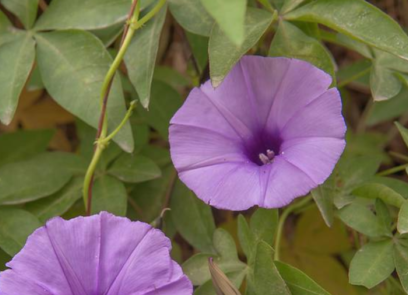
Some varieties by color of inflorescences:
- Blue: Blue Star, Summer Sky.
- Blue: Flying Saucers, Grand.
- White: Pearl Gate.
- Burgundy: Chocolate, Lady Hamilton.
- Orange: Spanish flag.
- Reds: Quamoclite is fiery red, Mikiozaki.
- Pink: Fortune, marzipan stars, Imperial mix.
- Violet: Fluorescent, Gypsy, Violet.
Design
For designers, morning glory is a godsend, as it grows rapidly. It can be launched on the necessary supports, which she will twist, giving them any form. For example, morning glory ruby lights can be grown as an ampule plant, only planting and care should be more reliable than in open ground.
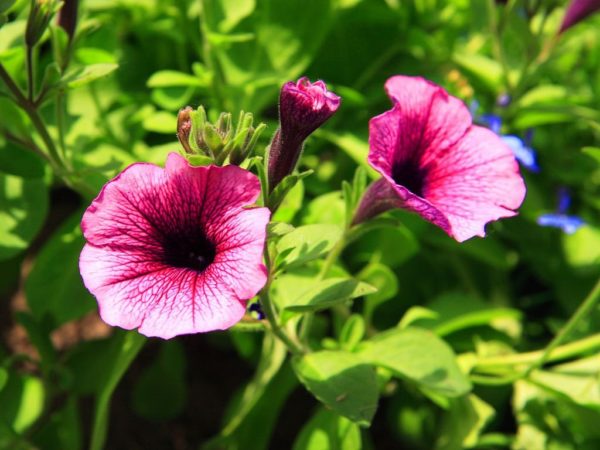
When landscaping is carried out, they pay attention to annual species that can close empty places that are not occupied by perennials.
Landing Features
Due to its southern origin, different conditions for the plant must be observed in various climatic zones of Russia.
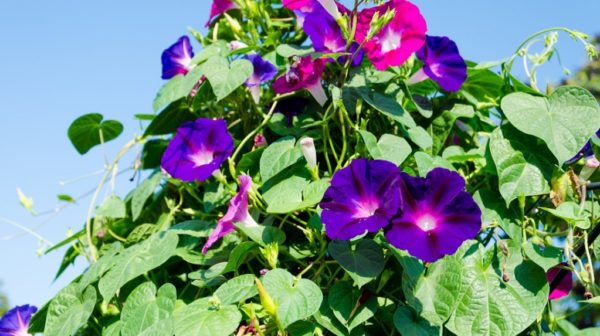
Ipomoea loves heat, so planting and care in the open ground in Siberia is becoming a problem. Many gardeners prefer to grow it through seedlings. It is not difficult, as well as immediately to the flowerbed. It is only necessary to prepare the containers by treating them with a potassium permanganate solution.
Do not be afraid to experiment. Create your beautiful landscapes. Morning glory will help you with this. Her planting will not cause difficulties and care is perfect for beginner gardeners. In open ground, it grows quickly, and in the photo it looks amazing.




 10 beautiful annuals that bloom all summer
10 beautiful annuals that bloom all summer Sow in the ground, without seedlings: 10 beautiful and unpretentious flowers
Sow in the ground, without seedlings: 10 beautiful and unpretentious flowers Platicodon planting and outdoor care
Platicodon planting and outdoor care Hosta - planting and care in the open ground in the Urals
Hosta - planting and care in the open ground in the Urals